Mechanical Behavior of the Rock-Concrete Interface for a Bridge Anchorage Structure Using Discrete Element Method
Abstract
:1. Introduction
2. In-Situ Direct Shear Test for the Rock-Concrete Interface
3. Scale Model Tests and Calibration of the DEM Model
4. DEM Simulation of the Anchorage Model under the Design and Overload Condition
4.1. Under the Design Load
4.2. Under the Overload Condition
4.3. Effect of Keyway and Platforms
5. Conclusions
- (1)
- The DEM approach can qualifiedly simulate the in-situ scale test in a numerical way and explain some interesting phenomena that are hardly observed in tests, such as the deformation and stress conditions on the concrete-rock contact surface.
- (2)
- Under the design load condition, the deformation of the anchorage model is basically characterized by the rigid rotation about the keyway of platform #2. The platforms #2 and #1, rather than platform #3, bear the most shear load due to the large upward displacement of the bank side of the bridge anchorage. The anchorage-rock system basically remains in an elastic state under the design load, and the interface and rock mass will not fail under the shear action.
- (3)
- With the help of the DEM simulation, the failure behavior of the anchorage model can be revealed, especially the progressive failure process of the concrete-rock contact surface that lies underneath the anchorage model. It is confirmed that, akin to the displacement mode during the design loading phase, the displacement mode at the failure state is also rigid rotation about the keyway of platform #2. During the failure process, the bank side of the anchorage model was gradually lifted by the lateral thrust and lost its sliding resistance, while platform #1 would provide the majority of the anti-sliding force.
- (4)
- The DEM simulation results show that the anti-sliding measures such as keyway and platform can improve the equivalent stiffness by about 10–20% and the interface anti-sliding capacity by around 50%. Therefore, these measures should not be ignored in the anchorage design work.
- (5)
- The main limitation of the current paper is that the design and construction work of the bridge project were abandoned due to local policy reasons. Therefore, no DEM simulation was performed for the real prototype anchorage. Yet the current work is sufficient to demonstrate the feasibility of the DEM approach in the analysis of the bridge anchorage problems.
Author Contributions
Funding
Institutional Review Board Statement
Informed Consent Statement
Data Availability Statement
Acknowledgments
Conflicts of Interest
Nomenclature
| CY model | Continuously yielding model |
| DEM | Discrete element method |
| FEM | Finite element method |
| MC model | Mohr-Coulomb model |
References
- Kim, H.K.; Lee, M.J.; Chang, S.P. Non-linear shape-finding analysis of a self-anchored suspension bridge. Eng. Struct. 2002, 24, 1547–1559. [Google Scholar] [CrossRef]
- Li, J.H.; Feng, D.M.; Li, A.Q.; Yuan, H.H. Determination of reasonable finished state of self-anchored suspension bridges. J. Cent. South Univ. 2016, 23, 209–219. [Google Scholar] [CrossRef]
- Han, Y.; Chen, Z.; Luo, S.; Yang, S. Calculation method on shape finding of self-anchored suspension bridge with spatial cables. Front. Struct. Civil Eng. 2009, 3, 165–172. [Google Scholar] [CrossRef]
- Matsumoto, K.; Arturo Linan Panting, C.; Kitratporn, N.; Takeuchi, W.; Nagai, K.; Iwasaki, E. Performance Assessment Using Structural Analysis and Spatial Measurement of a Damaged Suspension Bridge: Case Study of Twantay Bridge, Myanmar. J. Bridge Eng. 2018, 23, 1–14. [Google Scholar] [CrossRef] [Green Version]
- Han, Y.; Liu, X.; Wei, N.; Li, D.; Deng, Z.; Wu, X.; Liu, D. A Comprehensive Review of the Mechanical Behavior of Suspension Bridge Tunnel-Type Anchorage. Adv. Mater. Sci. Eng. 2019, 2019, 3829281. [Google Scholar] [CrossRef] [Green Version]
- Zhang, Z.; Wang, H.; Qin, S.; Ge, X. Limit span of self-anchored cable-stayed suspension cooperation system bridge based on strength. Front. Struct. Civil Eng. 2009, 3, 286–291. [Google Scholar] [CrossRef]
- Koji, K.; Fumio, T. Several Geotechnical Design and Construction Issues with Akashi Strait Bridge. Soils Found. 2010, 50, 829–845. [Google Scholar]
- Saad, A.S.; Sanders, D.H.; Buckle, I.G. Experimental evaluation of bridge column foundation rocking behavior. J. Bridge Eng. 2018, 23, 1–13. [Google Scholar] [CrossRef]
- Sun, J.; Manzanarez, R.; Nader, M. Design of looping cable anchorage system for new San Francisco-Oakland Bay Bridge main suspension span. J. Bridge Eng. 2002, 7, 315–324. [Google Scholar] [CrossRef]
- Li, W.S.; Lai, Y.J.; Wu, C.J. 2D-Finite element numerical modelling and analysis of an anchorage of suspension bridge. Chin. J. Undergr. Space Eng. 2009, 5, 1768–1775. [Google Scholar]
- Wu, G.G.; Zhang, Y.J.; Chen, G.P.; He, S.L. Stress analysis of gravity anchorage of Aizhai bridge. Bridge Constr. 2013, 43, 40–44. [Google Scholar]
- Zhang, Q.H.; Li, Y.J.; Yu, M.W.; Hu, H.H.; Hu, J.H. Study of the rock foundation stability of the Aizhai suspension bridge over a deep canyon area in China. Eng. Geol. 2015, 198, 65–77. [Google Scholar] [CrossRef]
- Lee, S.H.; Lee, H.; Paik, I.; Lee, H.S. Evaluation of load and resistance factors for the reliability-based design of the main cable of earth-anchored suspension bridges. KSCE J. Civ. Eng. 2016, 20, 2457–2468. [Google Scholar] [CrossRef]
- Gwon, S.G.; Choi, D.H. Static and dynamic analyses of a suspension bridge with three-dimensionally curved main cables using a continuum model. Eng. Struct. 2018, 161, 250–264. [Google Scholar] [CrossRef]
- Gorman, J.A.; Gross, D.; Hall, T.S.; Matty, S.; Christoffersen, S.; Cavendish-Tribe, A.; Shulock, R. San Francisco-Oakland Bay Bridge anchor rod cracking issues. Mater. Perform. 2015, 54, 52–57. [Google Scholar]
- Shin, S.U.; Jung, M.R.; Park, J.; Kim, M.Y. A deflection theory and its validation of earth-anchored suspension bridges under live loads. KSCE J. Bridge Eng. 2015, 19, 200–212. [Google Scholar] [CrossRef]
- Liu, X.R.; Li, D.L.; Wu, X.C.; Li, W.S.; Zhang, R.; Fu, Y. Filed model tests on bearing behavior of mudstone tunnel anchorage. Chin. J. Geotech. Eng. 2017, 39, 161–169. [Google Scholar]
- Lekidis, V.; Tsakiri, M.; Makra, K.; Karakostas, C.; Klimis, N.; Sous, I. Evaluation of dynamic response and local soil effects of the Evripos cable-stayed bridge using multi-sensor monitoring systems. Eng. Geol. 2005, 79, 43–59. [Google Scholar]
- Cundall, P.A.; Lemos, J.V. Numerical simulation of fault instability with the continuously yielding joint model. In Rockbursts and Seismicity in Mines, Proceedings of the International Symposium on Rockbursts and Seismicity in Mines, Minneapolis, MN, USA, 8–10 June 1988; Fairhurst, C., Ed.; Balkema: Rotterdam, The Netherlands, 1990; pp. 147–152. [Google Scholar]
- Cui, Z.; Sheng, Q.; Leng, X.L. Control effect of a large geological discontinuity on the seismic response and stability of underground rock caverns: A case study of the Baihetan #1 surge chamber. Rock Mech. Rock Eng. 2016, 49, 2099–2114. [Google Scholar]
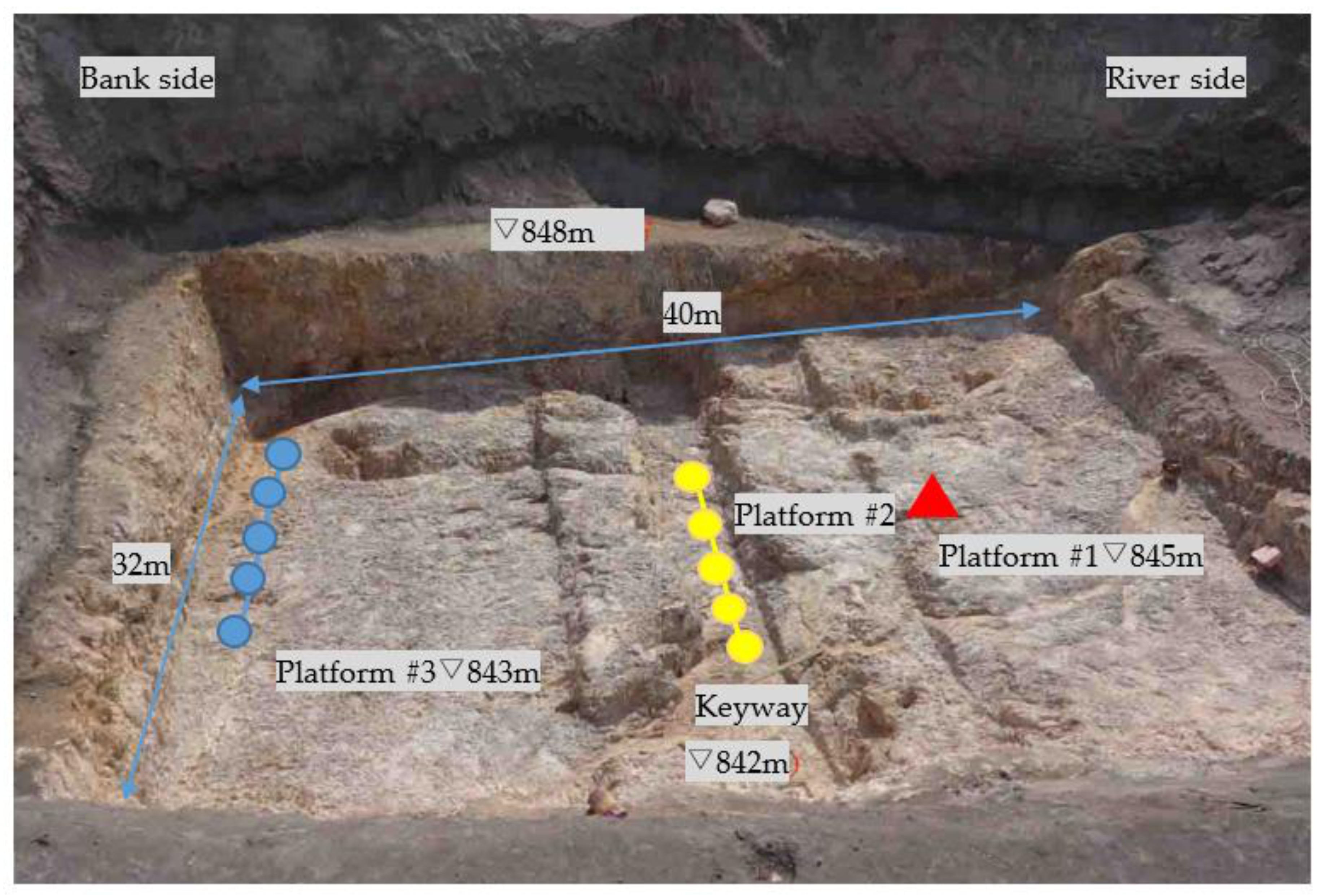


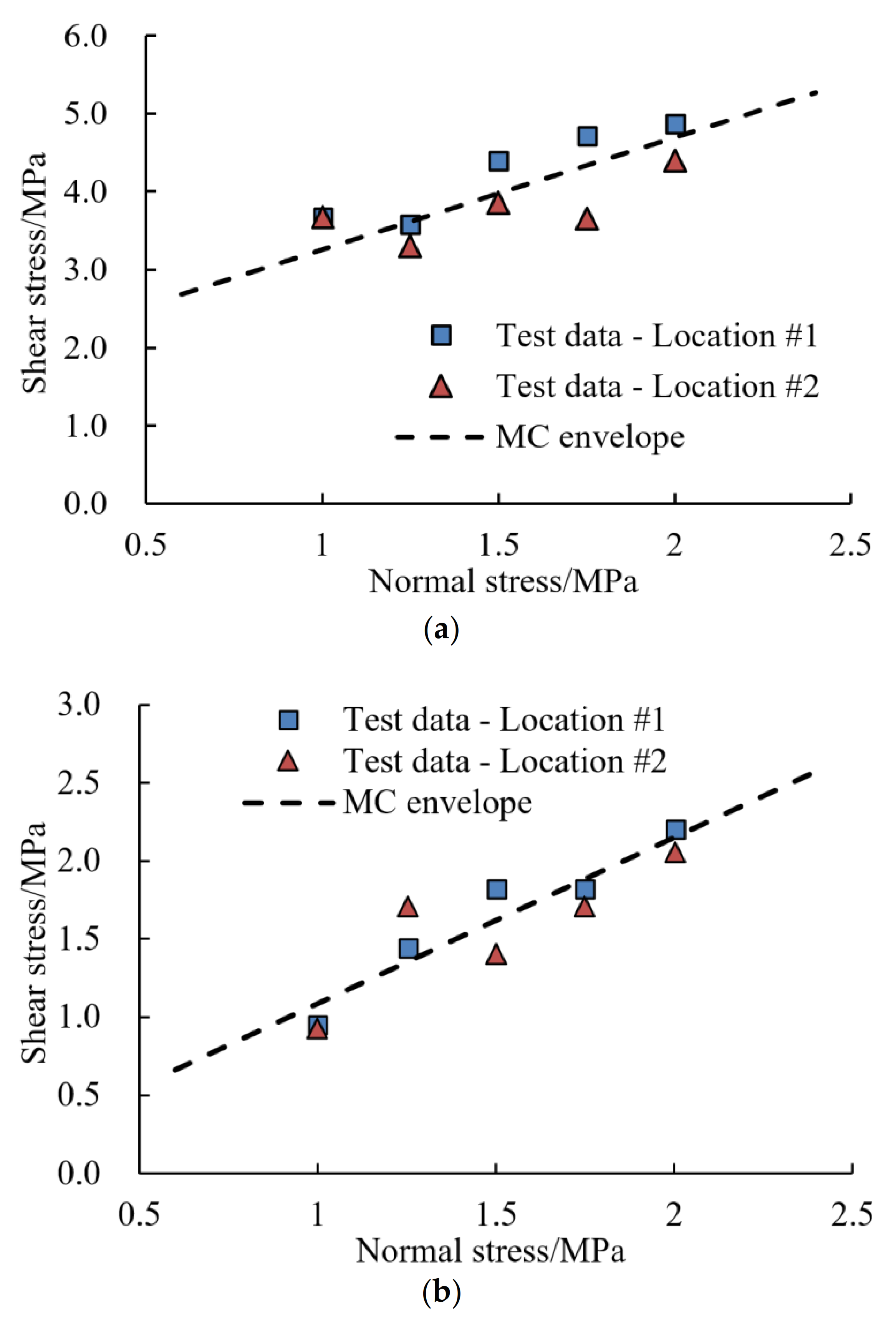

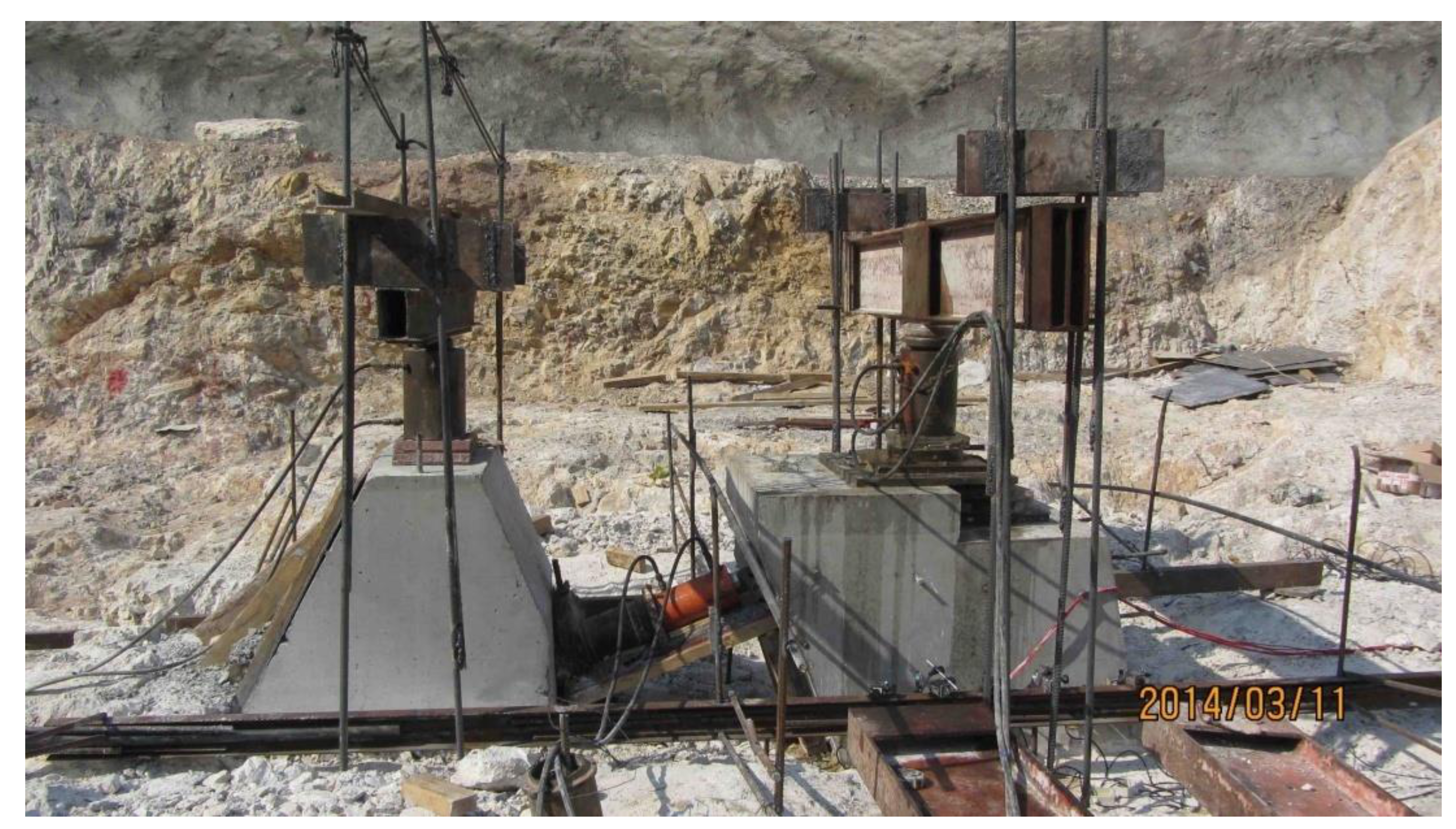
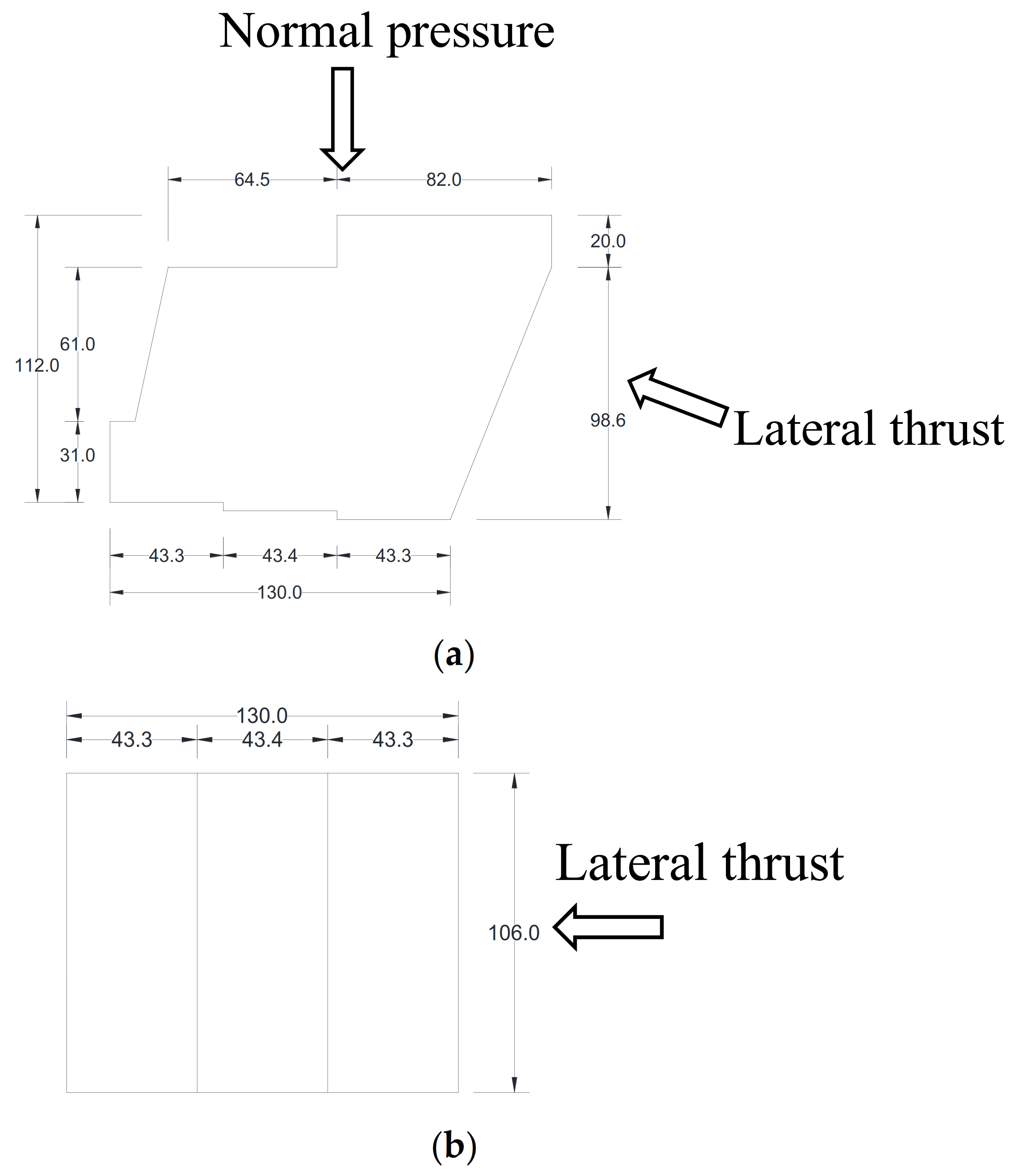

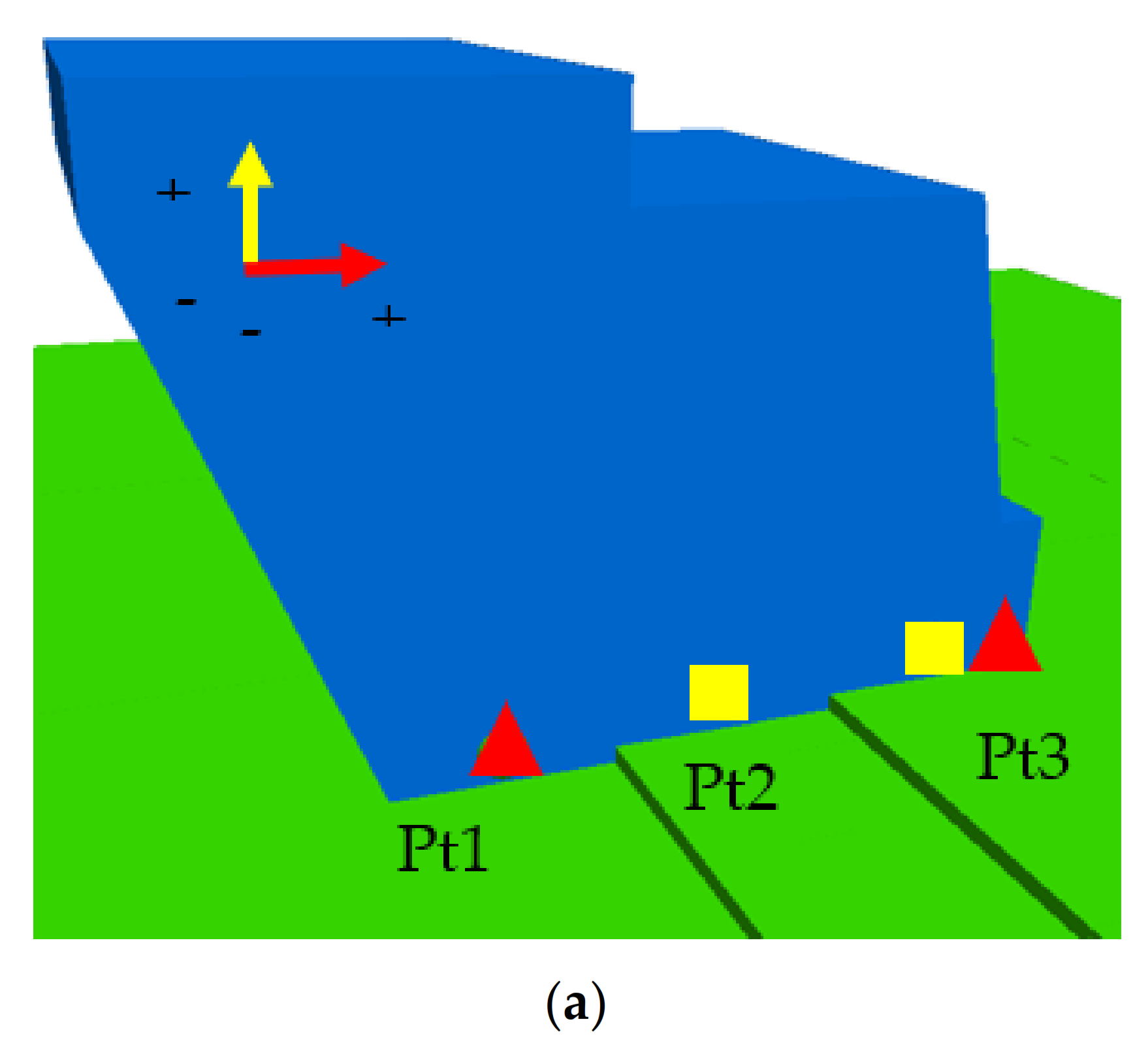


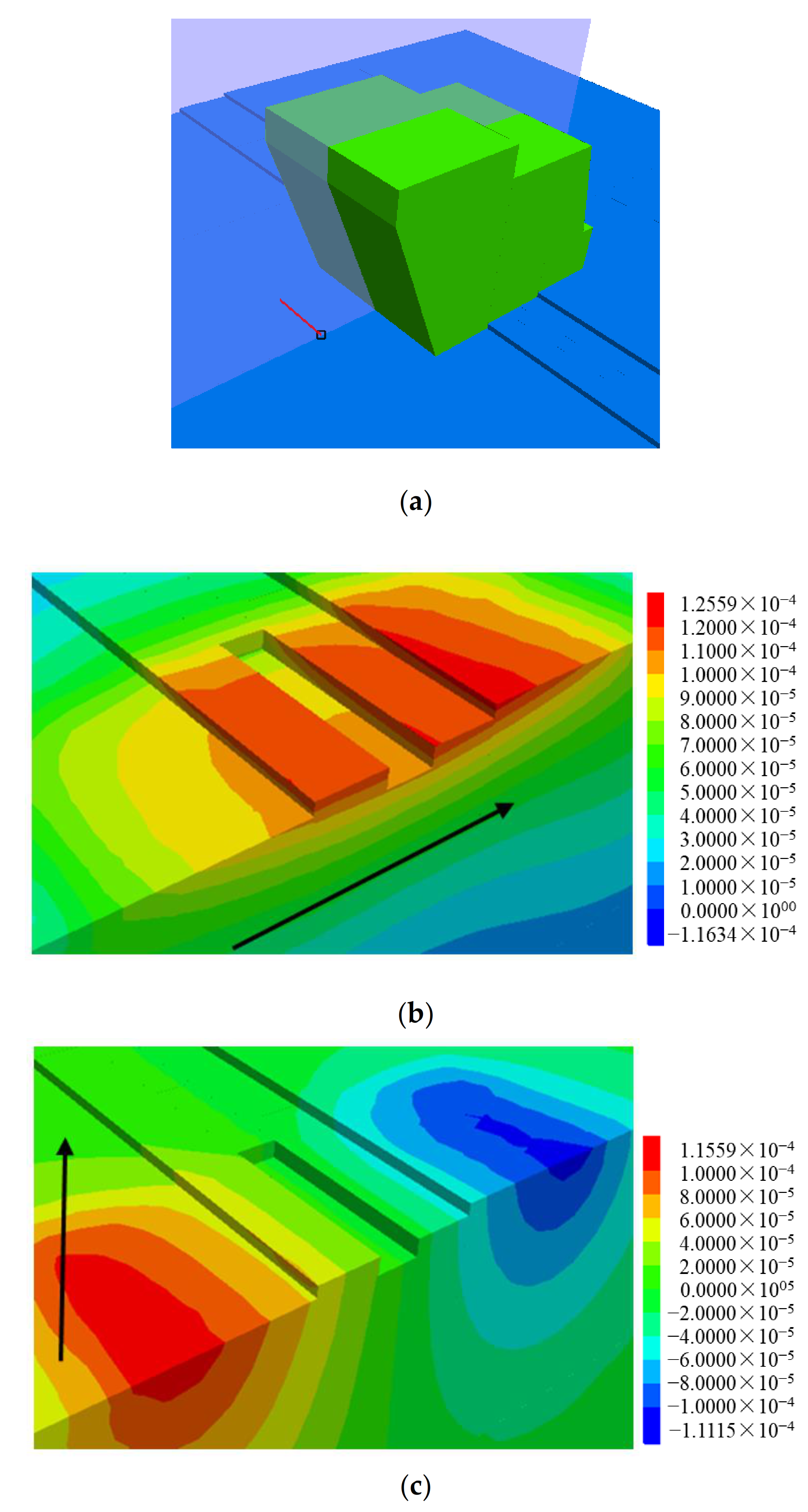
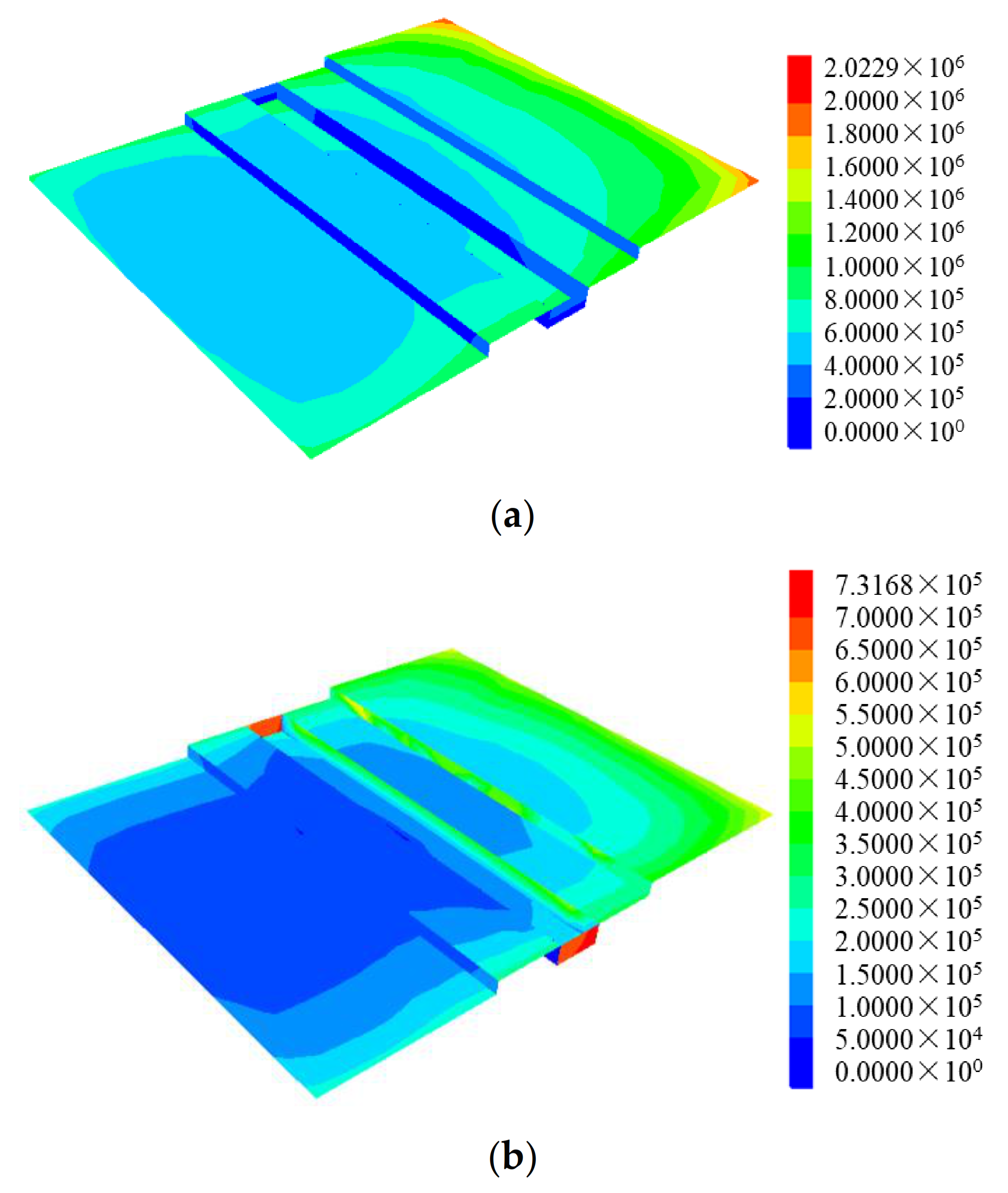
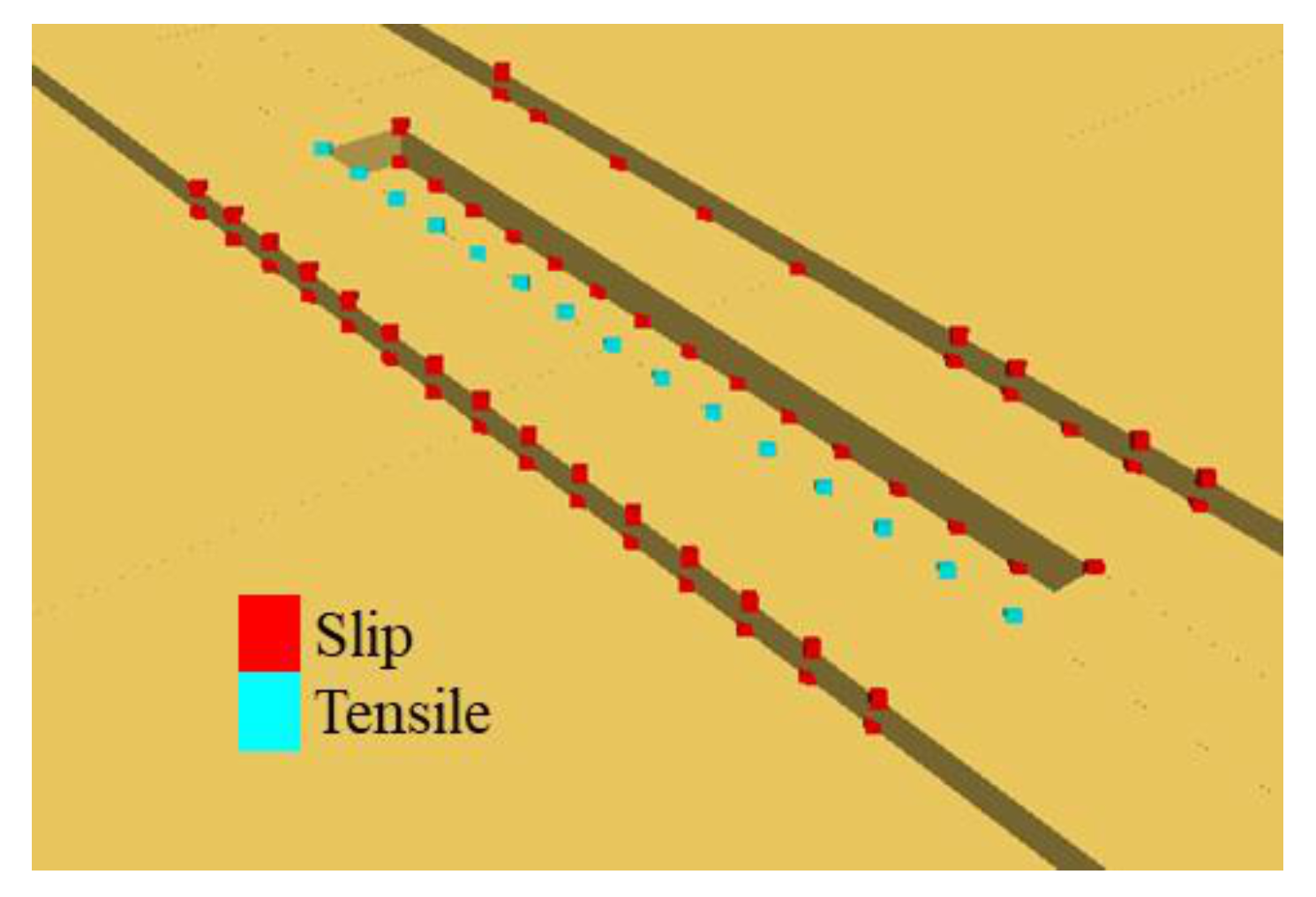
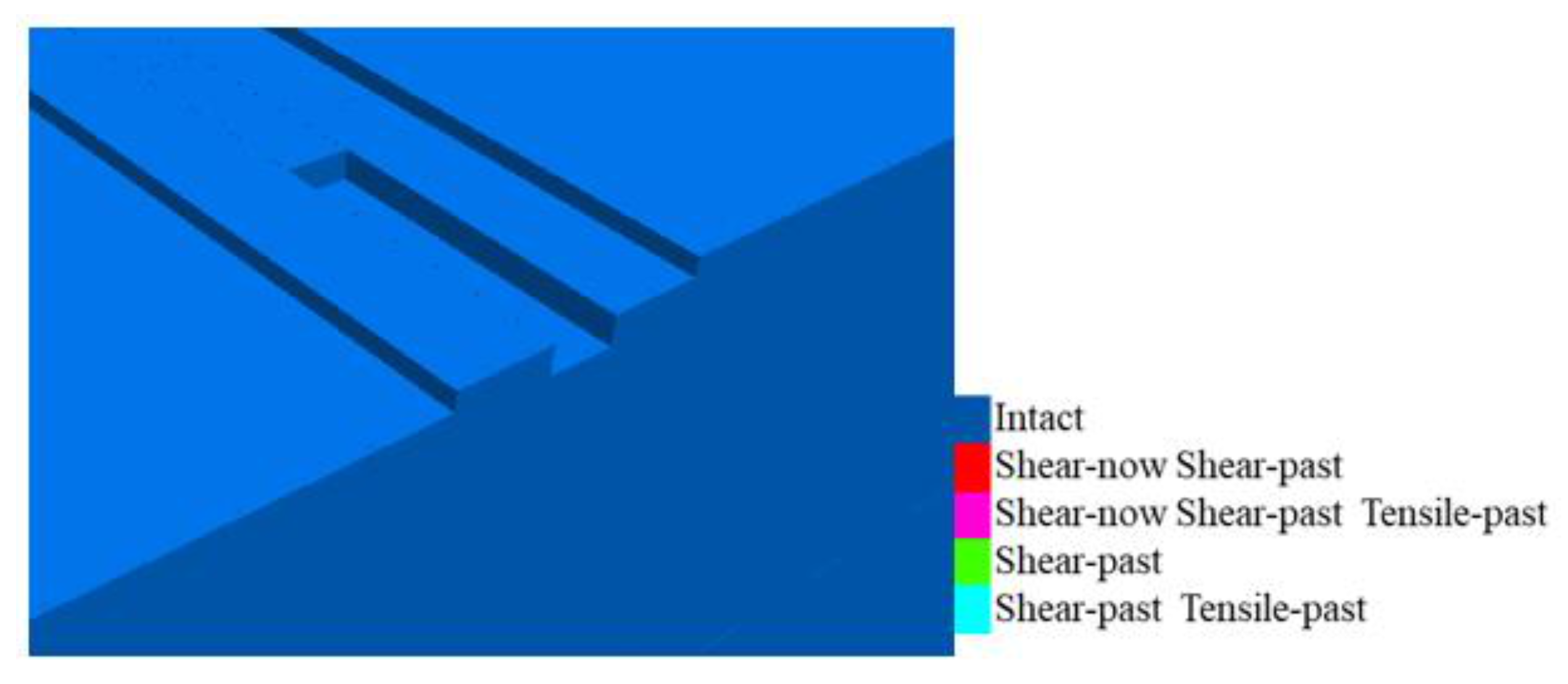






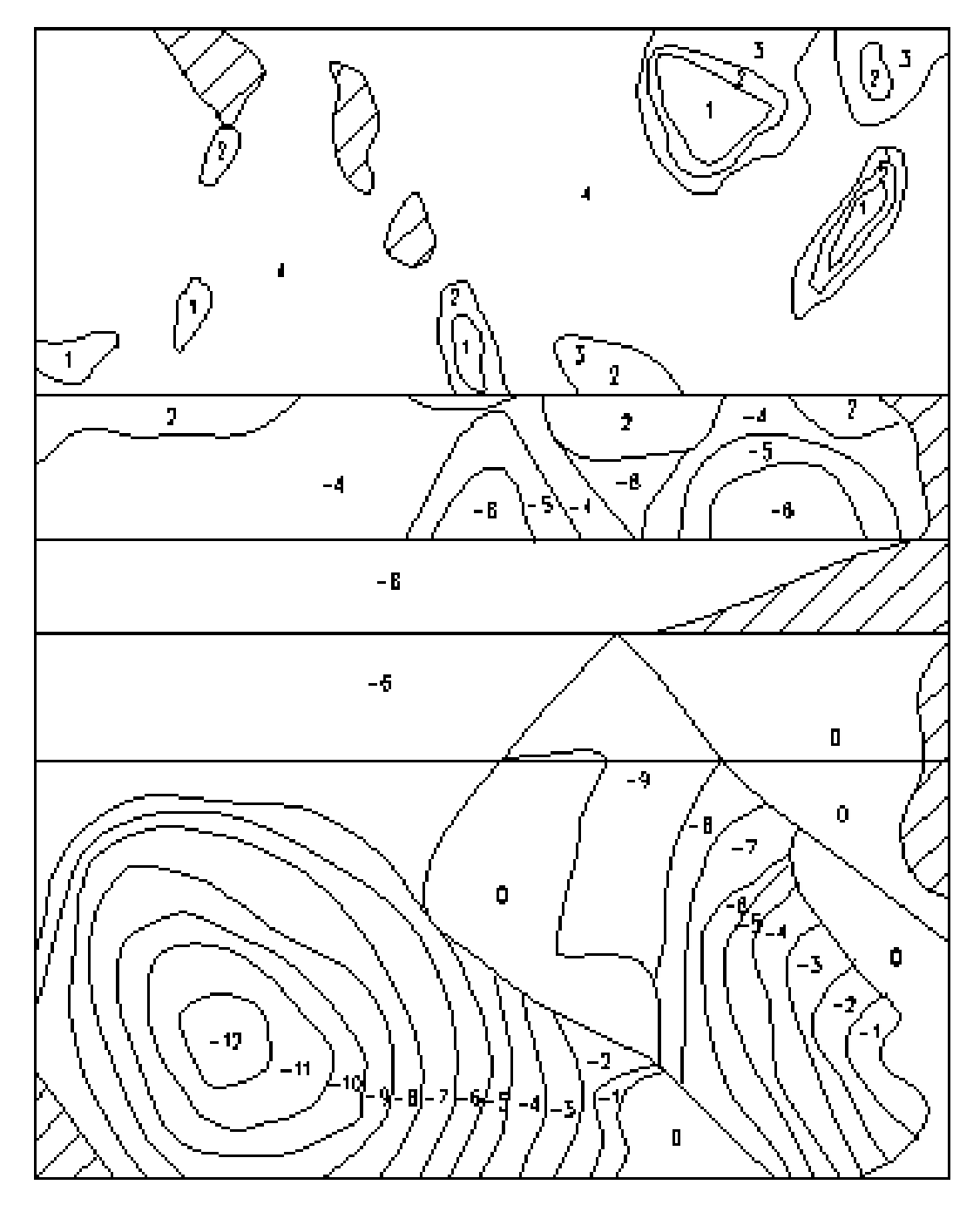
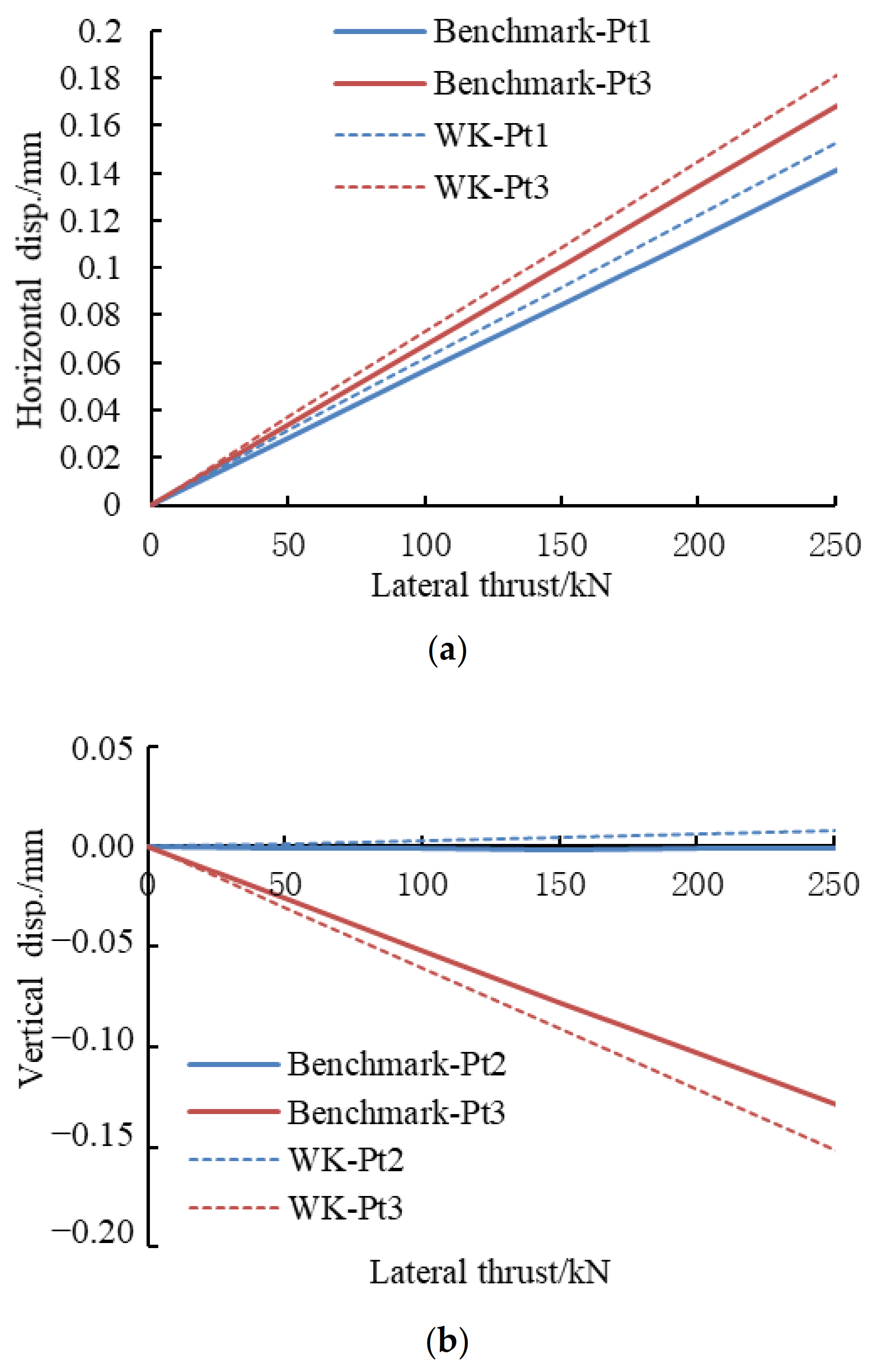

| Location No. | Strength/MPa | 1.00 | 1.25 | 1.50 | 1.75 | 2.00 |
|---|---|---|---|---|---|---|
| 1 | Peak | 3.70 | 3.6 | 4.43 | 4.74 | 4.92 |
| Resident | 0.92 | 1.40 | 1.70 | 1.82 | 2.20 | |
| 2 | Peak strength | 3.70 | 3.33 | 3.90 | 3.71 | 4.39 |
| Resident | 0.91 | 1.69 | 1.39 | 1.71 | 2.13 | |
| Average | Peak strength | 3.70 | 3.47 | 4.17 | 4.22 | 4.65 |
| Resident | 0.92 | 1.55 | 1.55 | 1.77 | 2.17 |
| Location No. | Peak Strength | Resident Strength | ||
|---|---|---|---|---|
| Friction Coefficient | Cohesion/MPa | Friction Coefficient | Cohesion/MPa | |
| 1 | 1.36 | 2.2 | 0.9 | 0.2 |
| 2 | 0.72 | 2.7 | 1.1 | 0.0 |
| Average | 1.08 | 2.4 | 1.0 | 0.1 |
| Total Disp./mm | Horizontal Disp./mm | Vertical Disp./mm | Rotation Angle/° | Maximal Differential Settlement/mm | |
|---|---|---|---|---|---|
| Scale model | 0.65 | 0.55 | 0.36 | 0.025 | 0.431 |
| Prototype | 19.5 | 16.5 | 10.8 | 0.025 | 13 |
Publisher’s Note: MDPI stays neutral with regard to jurisdictional claims in published maps and institutional affiliations. |
© 2022 by the authors. Licensee MDPI, Basel, Switzerland. This article is an open access article distributed under the terms and conditions of the Creative Commons Attribution (CC BY) license (https://creativecommons.org/licenses/by/4.0/).
Share and Cite
Cui, Z.; Zhang, M.; Sheng, Q. Mechanical Behavior of the Rock-Concrete Interface for a Bridge Anchorage Structure Using Discrete Element Method. J. Mar. Sci. Eng. 2022, 10, 221. https://doi.org/10.3390/jmse10020221
Cui Z, Zhang M, Sheng Q. Mechanical Behavior of the Rock-Concrete Interface for a Bridge Anchorage Structure Using Discrete Element Method. Journal of Marine Science and Engineering. 2022; 10(2):221. https://doi.org/10.3390/jmse10020221
Chicago/Turabian StyleCui, Zhen, Maochu Zhang, and Qian Sheng. 2022. "Mechanical Behavior of the Rock-Concrete Interface for a Bridge Anchorage Structure Using Discrete Element Method" Journal of Marine Science and Engineering 10, no. 2: 221. https://doi.org/10.3390/jmse10020221






